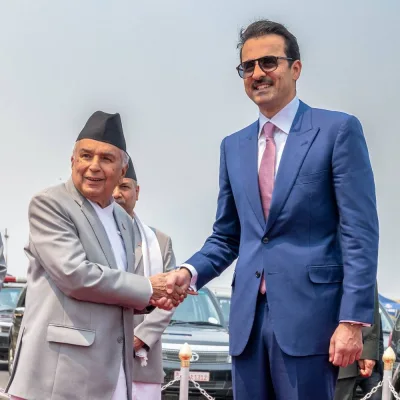In less than three months, the Nepal government will present the budget for fiscal year 2016-2017, but records show the government treasury still has 170bn rupees ($1.6bn) unspent, in an indication of how the government has struggled to expedite capital expenditure.
According to Nepal Rastra Bank officials, the unspent amount is the highest in the last four to five years.
Though poor capital spending is not a new phenomenon, the four-month-long trade disruption and border blockade, followed by a shortage of oil products and poor progress in post-earthquake reconstruction, severely hit the government’s overall spending this fiscal.
As of April 28, capital expenditure is limited to around 20% while overall budget spending stands at around 39%.
The capital expenditure of the ministries handling key development projects has remained poor during the first nine months of the current fiscal year, according to the financial comptroller general office, which releases the budget for the development projects.
For instance, capital expenditure of the ministry of physical infrastructure and transport is 11.16bn rupees against 39.19bn rupees allocated. The ministry handles major infrastructure projects like Mid-Hill Highway, North South Roads, Postal Roads and railway development.
Similarly, the ministry of urban development spent capital budget of 4.18bn rupees against the allocation of 18.25bn rupees.
The ministry of irrigation which handles major irrigation projects such as Sikta, Rani-Jamara-Kulariya, and Bheri-Babai among others has spent capital budget of 5.64bn rupees as of mid-April against the allocated amount of 18.25bn rupees. The ministry of federal affairs and local development, a leading ministry in terms of capital budget, has spent 6.25bn rupees against the allocation of 16.5bn rupees.
While the government has struggled to expedite the capital expenditure, it has on the other hand raised internal loan of 80bn rupees.
“Along with poor capital spending, the government also raised 80bn rupees in internal loans, which resulted in a massive amount piling up in the treasury,” said Min Bahadur Shrestha, head of public debt management department at the central bank.
With the expected shortfall of around 50bn rupees in overall revenue collection this fiscal year as a result of the blockade and Tarai unrest, the government opted for an internal loan to bridge the gap. Although the government declared the current fiscal year as “budget implementation year,” implementation part has been disappointing.
Government officials say the lack of proper planning among government agencies is also responsible for the poor spending pattern in recent years, besides political volatility.
Baikuntha Aryal, joint secretary at the finance ministry, said some of the ministries don’t account for activity related spending in their budget plans when seeking fund for development projects. Hence the result is poor spending, he said.
The poor spending of capital budget funds in the first three quarters was repeated this fiscal year. “There is a tendency to spend haphazardly in the last quarter just to show that budget spending is compromised,” said Shankar Sharma, former vice chairman, National Planning Commission.

NEPAL


